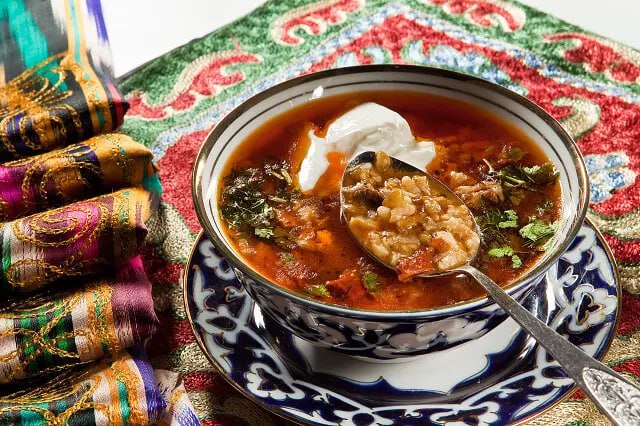Moshkhorda
Moshkhorda is a liquid dish made with rice and mash. This name is derived from the Tajik word mosh, which means "round, dark green grain of a leguminous plant" and the past participle form of the verb khordan, which means "eat-drink". It is composed in the Uzbek language and means "liquid food made from rice with mash". According to the ingredients and the method of preparation, there are types of mashkhorda with minced meat, mashkhorda with meat, and mashkhorda with skin. Ancient healers used this food as a diet that relaxes the nerves, clears the eyes, reduces bile, and cools fever by sweating well. The native land of mosh is India, it is widespread in Asia and Africa, but it is not cultivated in America and Europe. In these places, it is called "small brown peas of Asia" or sometimes called "yellow bean". It belongs to the legume family, the grain is dicotyledonous, similar to peppercorns, but round-cylindrical in shape, 1000 grains weigh from 30 to 80 grams. The color can be different: brown, dark green or brown. The best is the dark green one, which is easy to cook, tastes good and has a unique smell. The longer the mosh is stored, the more its color changes to brown, it becomes hard, it becomes harder to ripen, and its taste is reduced. Therefore, mosh cannot be stored for more than one year, the sooner it is used, the better and more useful it is. It should also be noted that in folk medicine, it is said that it is better to eat moshli food in the summer, during the day, it is difficult to digest when eaten in the winter and in the evening, and it boils the stomach. Mosh contains up to 45-50% starch and 25-30% protein, which does not remain from meat. Because of this, moshli dishes are very tasty and nutritious. Mosh also contains up to 2-4% fat, various mineral salts and some medicines. The following thoughts of Abu Ali ibn Sina about mosh are very valuable for us: "Mosh. Its grain is close to that of a large bean. The best time to eat it is summer. Humidity and dryness are moderate. Peeled mosh is temperate, unpeeled is prone to dryness.

 English
English O'zbek
O'zbek Русский
Русский